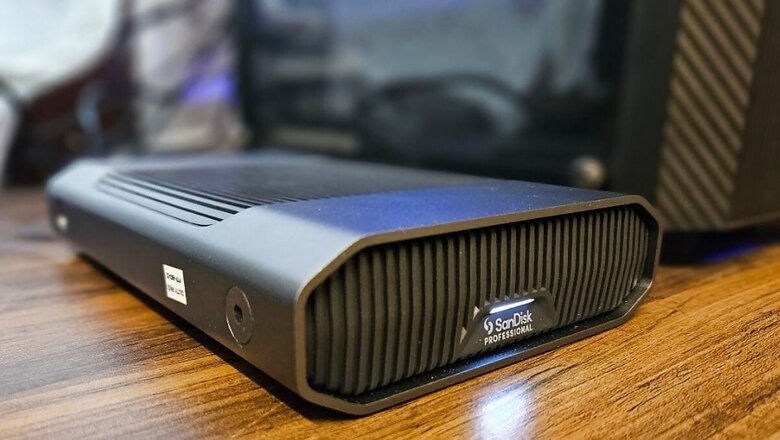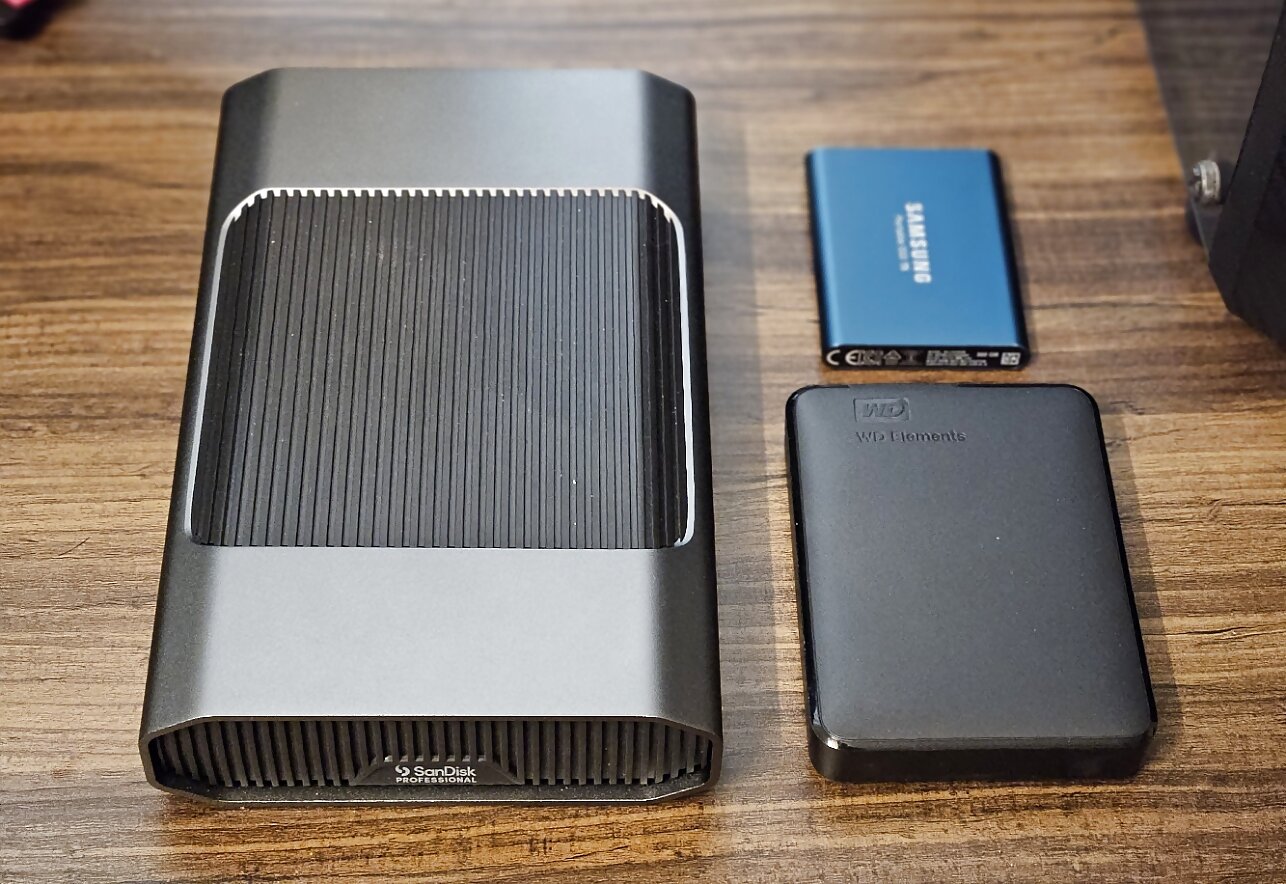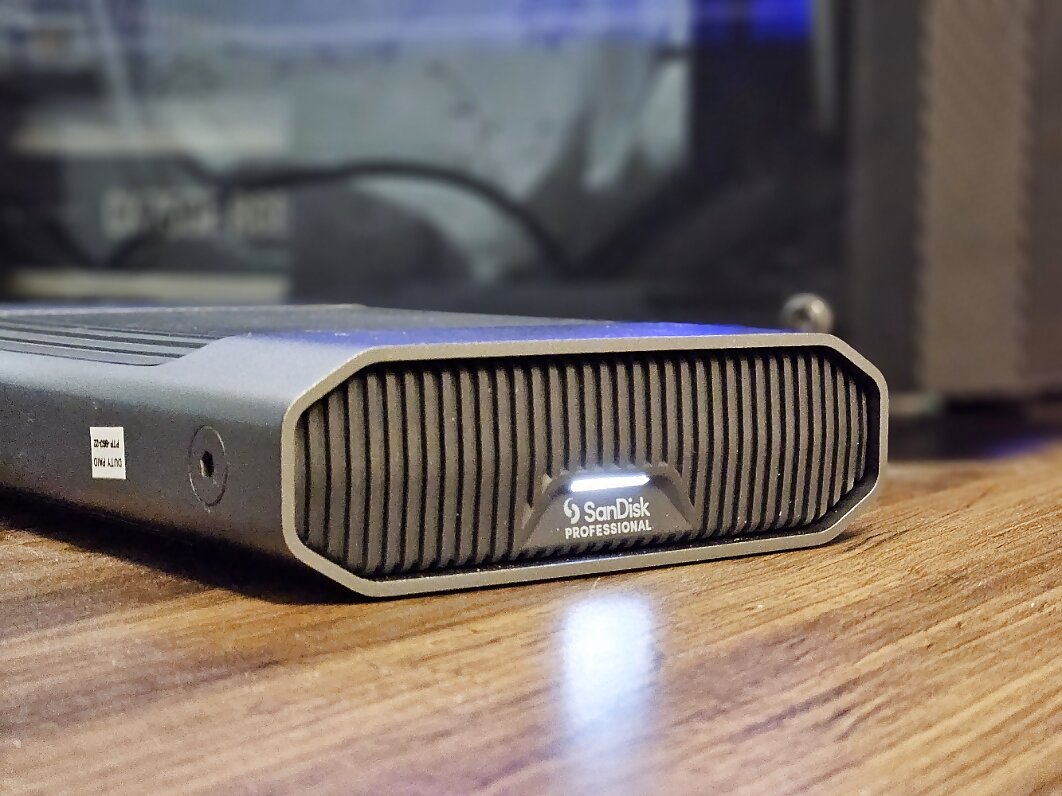
views
If you’re in search of a professional-grade storage solution, you may be faced with various options and recommendations. Some suggest investing in a NAS, while others propose purchasing multiple smaller capacity hard drives. However, if you’re a content creator or dealing with a substantial amount of data—investing in a durable professional-grade HDD like the SanDisk Professional G-Drive can be a sensible choice. In this review, I’ll outline the pros and cons of this drive and see if its worth the Rs 37,999 price tag.
In this review, I specifically tested the 12TB variant of the G-Drive, but it’s available in other capacities—including 4TB, 6TB, 18TB, and 22TB. The 6TB drive retails for Rs 23,999, 18TB for Rs 51,999 and 22TB for a whopping Rs 64,999.
It’s important to note that my evaluation of the drive is based on its suitability for storing finished projects as a content creator. For day-to-day footage storage and other purposes, alternative storage options like setting up a NAS exist.
Design and Use Case: Robust HDD Made for Creatives
Let’s begin with the design. The SanDisk G-Drive has a robust and futuristic appearance, reminiscent of something from a Star Trek movie. Its metal construction contributes to its durability, making it seem capable of withstanding significant impact.

Additionally, the metal build aids in heat dissipation, which is crucial considering the demanding data read and write operations involved. Throughout my testing, the drive remained cool and maintained consistent read and write speeds on Windows PCs (although it is APFS preformatted for Mac users, Windows users will need to change the format to NTFS or exFAT).
The drive itself is quite large and requires external power through a separate power supply unit. Consequently, using it as a portable device can be challenging. However, its design is intended for stationary use—such as a dedicated desk setup, serving as a centralized storage location for all your files that cannot fit on your desktop. Utilizing it in this manner will be the most effective, as alternative usage scenarios could prove cumbersome.
Speed: Impressive Performance for an HDD
Now, let’s address the most obvious question: Is the G-Drive as fast as an SSD? No, it’s a hard drive designed for long-term data storage. However, that doesn’t mean it’s slow by any means. In our testing, the G-Drive, operating at 7200 RPM, achieved a write speed of 226 MB per second and a read speed of 218 MB per second in the Crystal Disk Mark benchmark.
Although these figures slightly fall short of the company’s claims, they are still good, and actual performance may improve depending on your interface. It’s also worth noting that the drive utilizes USB 3.2 Gen 2.

What’s even more impressive is its consistent performance. I vividly recall transferring over 110 GB of data from my SD Card, and the writing speed never once dropped—a problem I’ve experienced with some cheaper external HDDs, including my 1 TB WD Passport drive. In this regard, the G-Drive proves to be reliable and simplifies your workflow.
What’s Not Good: Minor Niggles That Should Be Addressed
Firstly, the G-Drive comes pre-formatted to APFS for Macs, which means it needs to be reformatted to NTFS or exFAT for Windows PC use. This could be an inconvenience for non-tech-savvy individuals who aren’t familiar with formatting.
Secondly, despite being an enterprise-grade drive, it only includes a USB-C to USB-C cable and lacks a USB-C to USB-A cable in the package. This may be frustrating for users who don’t have access to USB-C ports on their systems.

Verdict: A Reliable and Efficient Storage Option
The SanDisk Professional G-Drive is a reliable and well-built drive with impressive read/write speeds for an HDD. It offers a balance between entry-level SSDs and HDDs in terms of speed. If you’re seeking a high-capacity storage solution, it might be worth investing in. However, I recommend considering only the storage capacities of 12TB and above, as anything below that, given the price, would result in overpaying for the provided features and specifications.













Comments
0 comment